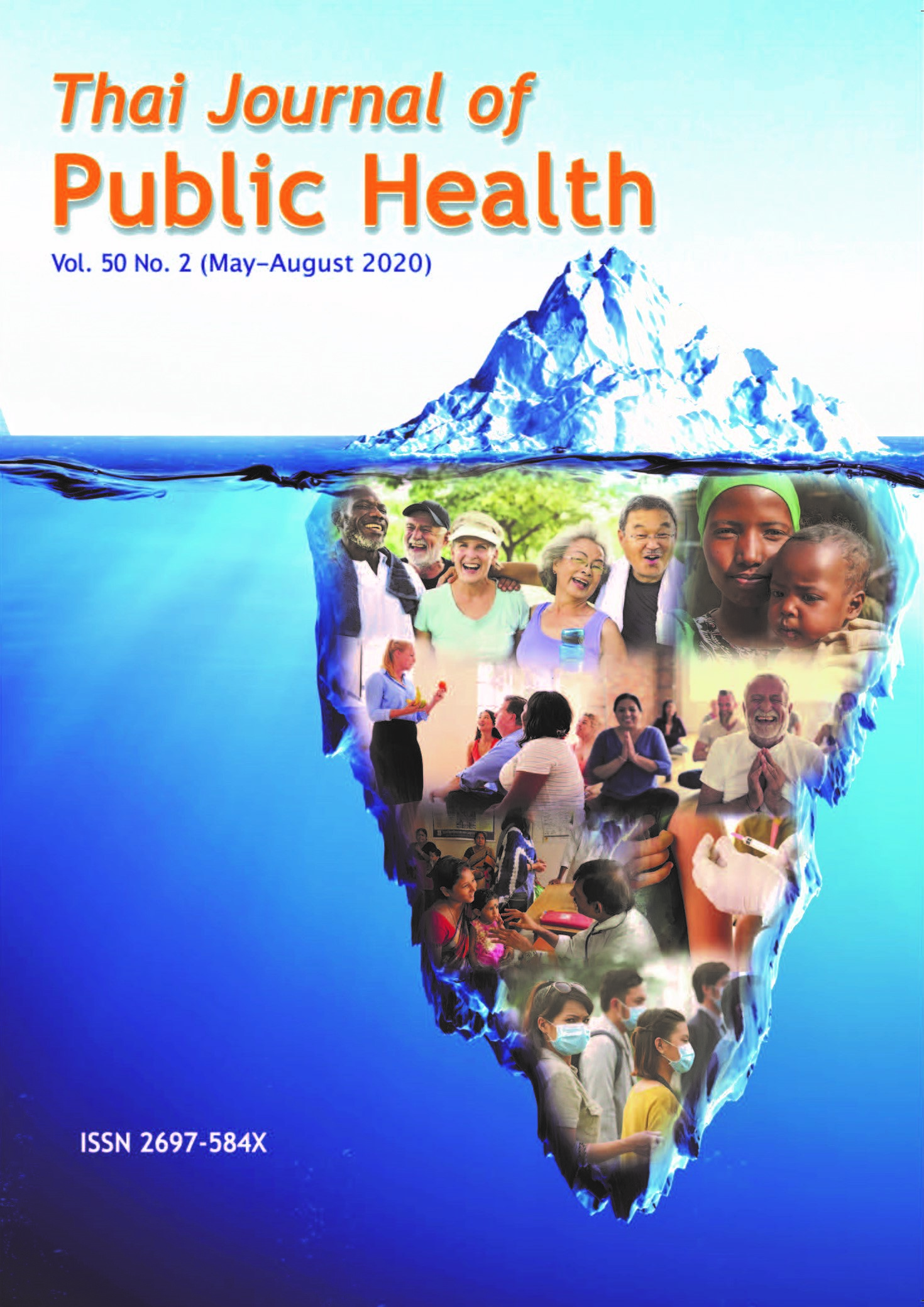Thai Traditional Medicine and Conventional Medicine Service for Non-Communicable Diseases: Case Studies for Integrative Treatment
Keywords:
Applied Thai Traditional medicine, Conventional medicine, Non-communicable disease, Thammasat University, Primary careAbstract
Integrative medicine, namely Thai traditional medicine together with conventional medicine, is popular among non-communicable disease (NCD) patients in Thailand. Around 60% of NCD patients were treated with integrative medicine services in Primary Care and Applied Thai Traditional Medicine, Faculty of Medicine, Thammasat University. However, miscommunication and referral between conventional medicine and Thai traditional medicine are the operational gaps in an integrated health care system. The objectives of this study were to study the health service experience of NCD patients in Thai traditional medicine along with conventional medicine and to develop guidelines for the development of Thai traditional medicine along with conventional medicine services.
This study was approved by the Ethical Committee of Thammasat University No.3 (COA No. 034/2560). A qualitative approach was adopted for this study. Data collection was conducted through in-depth interview of 12 informants, who included 9 NCD patients with disorders such as diabetes, hypertension and cerebrovascular diseases, and 3 applied Thai traditional medicine practitioners. A structured questionnaire was reviewed by experts and used in this study. The data were analysed using content analysis, based on the theories of the study, and were checked by the data triangulation method with 11 key informants. All participants completed consent forms before participating in interviews and had the right to deny answering any questions at any time without giving their reasons.
There were 23 participants including 12 informants and 11 key informants. For the informants, over half of the informants were male (n=8). There were 3 applied Thai traditional medicine practitioners who had between 1 to 3 years’ experience of working in Primary Care and Applied Thai Traditional Medicine, Faculty of Medicine, Thammasat University. The 9 NCD patients included 3 patients with cerebrovascular diseases, 3 patients with hypertension and 3 patients with diabetes. The patient’s right covered herbal medicine and Thai traditional medicine. Knowledge of conventional medicine personnel and community were the important determinants of the development of guidelines for integrative medicine services. Integration of knowledge between Thai traditional medicine and conventional medicine, Thai traditional personnel development, and the creation of policies and laws covering integrative medicine were processes to develop integrative medicine services for NCD patients.
This study reflected the health service innovation guideline which presented ideas and methods regarding the development of new services, in order to develop guidelines for the development of Thai traditional medicine along with conventional medicine services and to meet the needs of patients. Policy and patients’ rights with regards to integrative medicine were the main important determinants for the developmental processes related to integrative medicine services. These policies must originate from research focused on the actual problems. Moreover, the knowledge of health personnel and community were the key determinants of the development of integrative medicine services. The integration of knowledge from Thai traditional medicine and conventional medicine, and the development of integrated medical knowledge in health personnel and the population, will contribute towards the development of sustainable guidelines to increase the efficacy of integrative medicine services for NCD patients.
References
NCD Countdown 2030: worldwide trends in non-communicable disease mortality and progress towards Sustainable Development Goal target 3.4. Lancet 2018; 392(10152): 1072-88.
World Health Organization. Noncommunicable diseases. Available from: https://www.who.int/news-room/fact-sheets/detail/noncommunicable-diseases, accessed 24 June 24, 2020.
Kleinman A. Patients and healers in the context of culture: an exploration of the borderland between anthropology, medicine, and psychiatry. Berkeley, University of California Press,. 1980.
Gannotta R, Malik S, Chan AY, Urgun K, Hsu F, Vadera S. Integrative Medicine as a vital component of patient care. Cureus 2018; 10(8): e3098-e.
Bodeker G, Kronenberg F. A public health agenda for traditional, complementary, and alternative medicine. Am J Public Health 2002; 92(10): 1582-91.
Kleinman A, Benson P. Anthropology in the clinic: the problem of cultural competency and how to fix it. PLoS medicine 2006; 3(10): 1673-6.
Weintraub P, McKee M. Leadership for innovation in healthcare: An exploration. Int J Health Policy Manag 2019; 8(3): 138-44.
Pongpirul K, Jirathananuwat A, Phutrakool P. Thai herbal medicine research situation: systematic scoping review and policy recommendations. J Thai Trad Alt Med 2019; 17(2): 292-304. (In Thai)
Frass M, Strassl RP, Friehs H, Müllner M, Kundi M, Kaye AD. Use and acceptance of complementary and alternative medicine among the general population and medical personnel: a systematic review. Ochsner J 2012; 12(1): 45-56.
Maizes V, Schneider C, Bell I, Weil A. Integrative medical education: development and implementation of a comprehensive curriculum at the University of Arizona. Academic medicine : Journal of the Association of American Medical Colleges 2002; 77(9): 851-60.
Shankar D. Conceptual framework for new models of integrative medicine. J Ayurveda Integr Med 2010; 1(1): 3-5.
Ventola CL. Current issues regarding complementary and alternative medicine (CAM) in the United States: Part 3: Policies and practices regarding dietary supplements in health care facilities. P&T 2010; 35(10): 570-6.
Hegyi G, Petri RP, Jr., Roberti di Sarsina P, Niemtzow RC. Overview of integrative medicine practices and policies in NATO participant countries. Med Acupunct 2015; 27(5): 318-27.
Boon HS, Verhoef MJ, Vanderheyden LC, Westlake KP. Complementary and alternative medicine: a rising healthcare issue. Healthcare Policy 2006; 1(3): 19-30.
Morgan R, Berthon P. Market orientation, generative learning, innovation strategy and business performance inter-relationships in bioscience firms. Journal of Management Studies 2008; 45: 1329-53.
Spinks J, Hollingsworth B. Policy implications of complementary and alternative medicine use in Australia: data from the National Health Survey. J Altern Complement Med 2012; 18(4): 371-8.
Vafaie V, Rahimi E, Rostami N, Shad F. The importance of knowledge management on innovation. AMIEMT 2016; 5(1): 68-73.
Rajagopal R. Measuring customer value gaps: an empirical study in Mexican retail market. Economic Issues 2005; 11(1): 19-40.
Downloads
Published
Issue
Section
License
Creative Commons License CC-BY-ND


